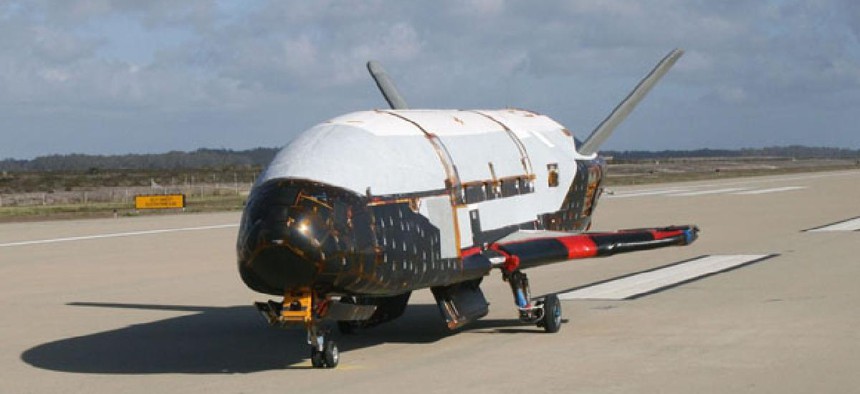Unmanned spacecraft concludes 15-month test flight

The Air Force's unmanned X-37B Orbital Test Vehicle. Air Force
X-37B could fill in role of NASA Space Shuttle, Air Force says
The Air Force's unmanned X-37B Orbital Test Vehicle landed June 16 at Vandenberg Air Force Base, Calif., ending a 469-day test flight mission, the service announced.
The Boeing-built aircraft launches and lands on a runway autonomously and was developed to carry up experiments into low Earth orbit, according to a military fact sheet.
Initially a NASA initiative, the X-37B program was transferred to the Defense Advanced Research Projects Agency in 2004. The unmanned spacecraft could fill in the role of the NASA Space Shuttle, the service said. “With the retirement of the space shuttle fleet, the X-37B OTV program brings a singular capability to space technology development,” Lt. Col. Tom McIntyre, the X-37B program manager said in a statement.
The Air Force has emphasized the goal of the flight was to test the space plane, but a classified payload on board has led to speculation about the mission's true purpose, the Associated Press notes. Observers have hypothesized that the test-flight could have involved testing new forms of imagery gathering for a clandestine operation.





